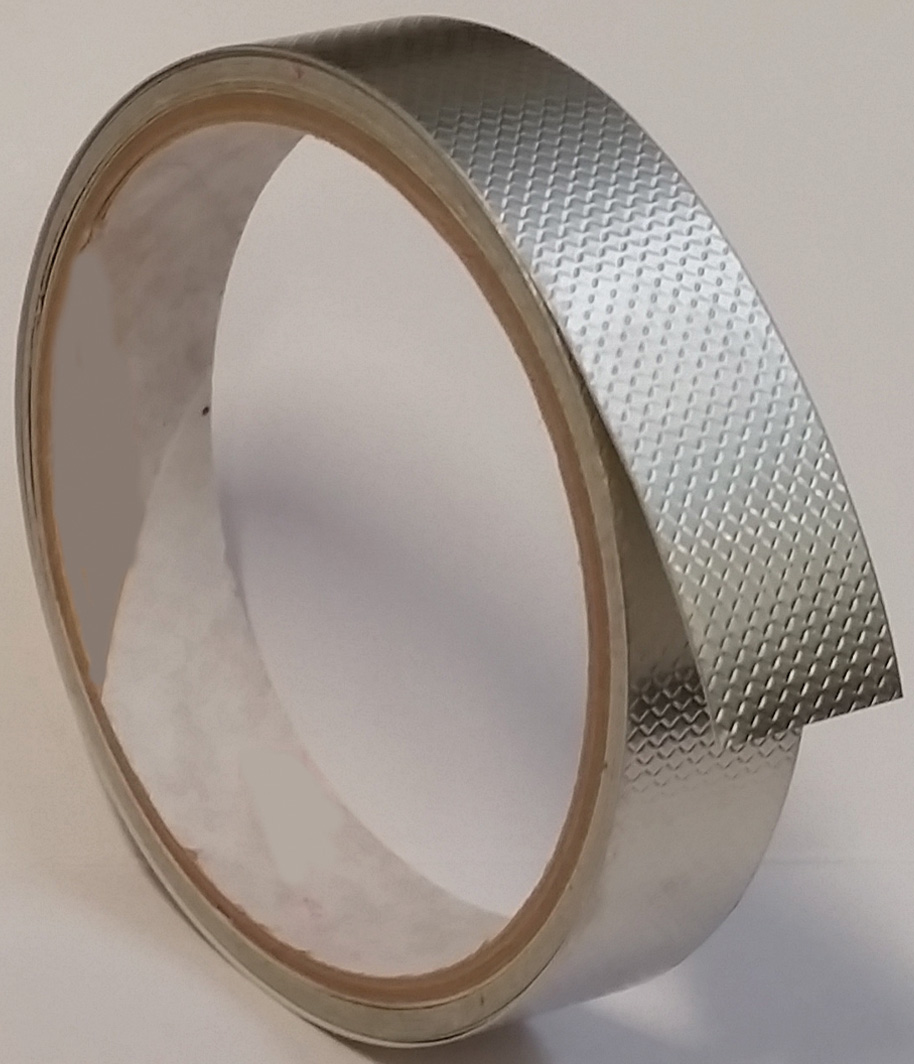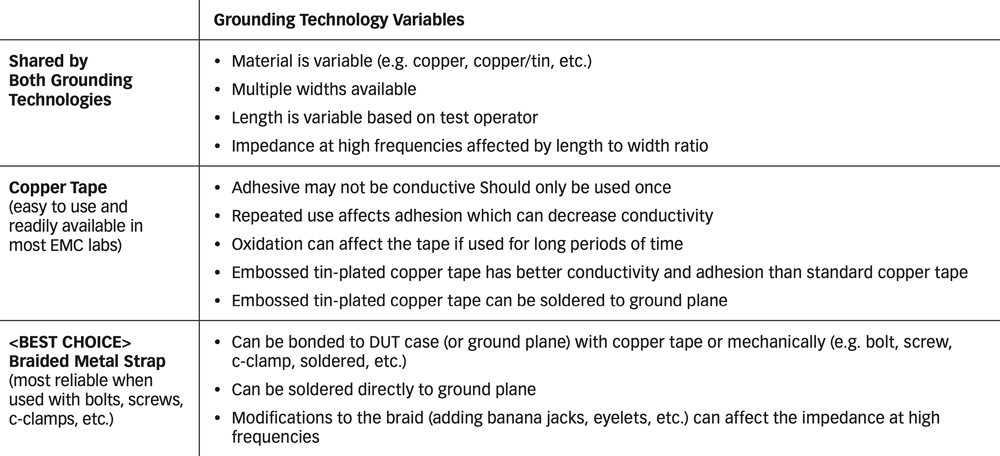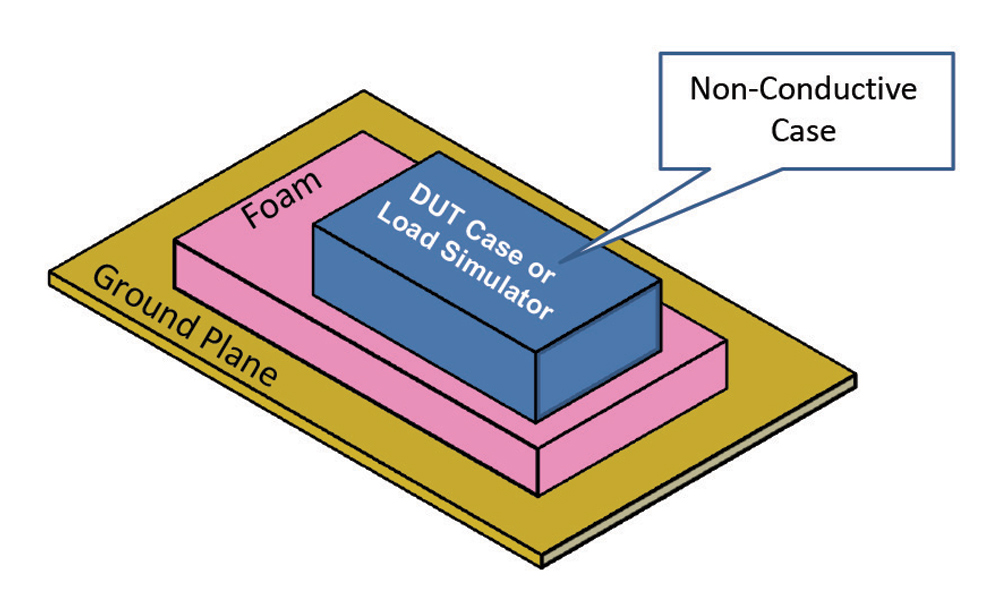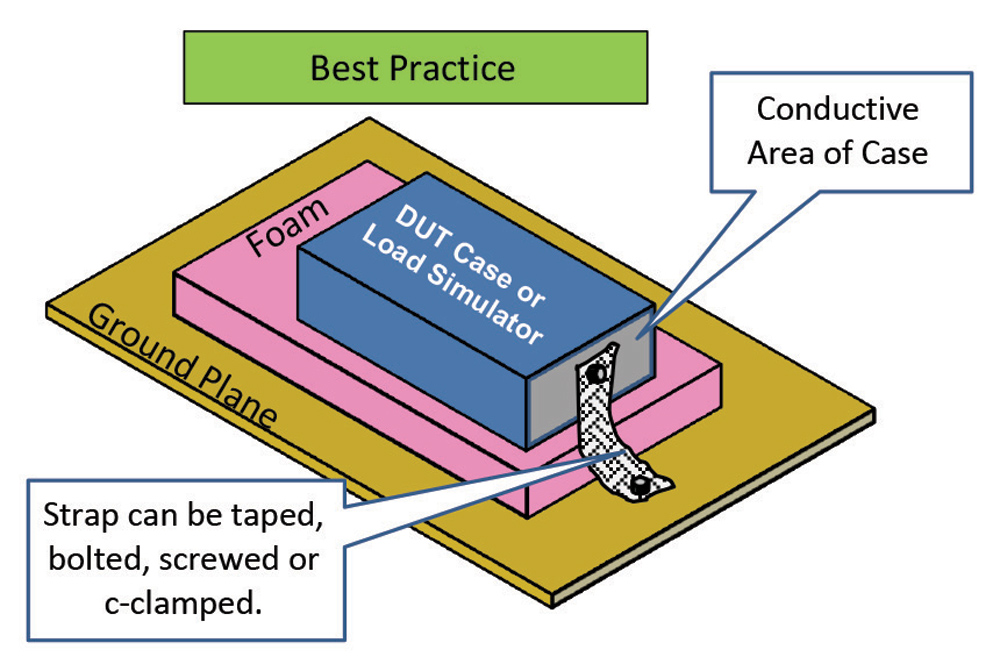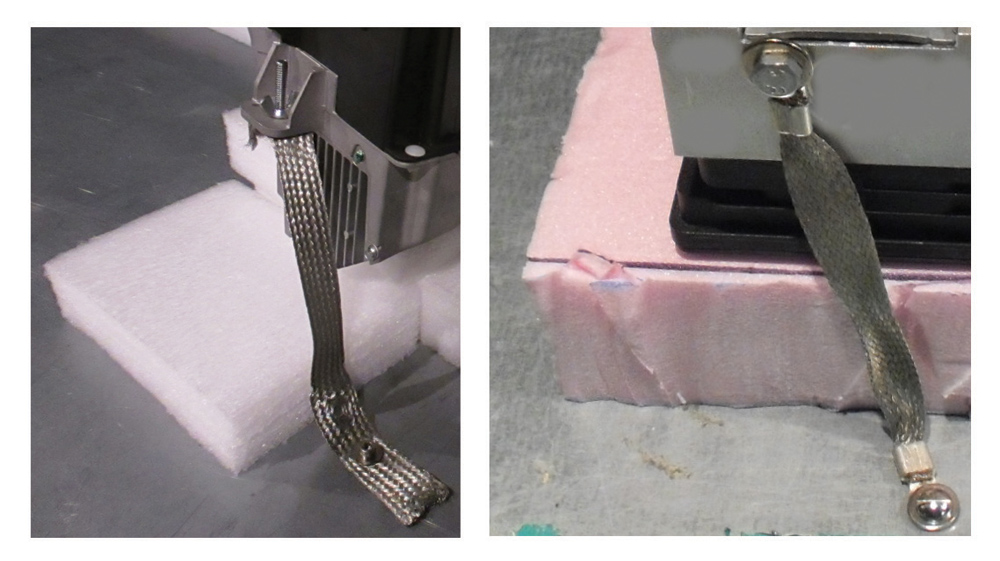ne of the more overlooked elements of an automotive EMC test plan is defining the grounding for the device under test (DUT) case and its load simulator. These are critical items that will not only affect the test results, but also the test repeatability. Even if the DUT and load simulator have a non-conductive case with no customer grounding installation requirements, this still needs to be defined for the EMC test lab.
Customer requirements typically determine how the load simulator is grounded. The customer may require either a non-conductive plastic or metallic enclosure be used for the load simulator. In some cases, actual loads may be allowed without an enclosure. Actual loads may be a seat motor, parking brake switch, wheel speed sensors, etc. This must be defined in the EMC test plan.
Note 1 to entry: A low current (≤100 mA) 4-wire milliohm metre is recommended for this measurement.”
The ground straps shown in Figure 3 are an example of what an EMC test lab may choose for your product if not defined in the EMC test plan. Note, the impedance at high frequencies will be different due to the width, length and addition of connectors (e.g., banana plugs, eyelets, etc.). As shown in Figure 3, the ends of the braid may fray. This can be remedied by soldering the ends of the braid. Also, if adding a hole for a fastener (e.g., bolt, screw, etc.), the edges of the hole should be soldered to prevent fraying. Alternatively, the braid can be soldered directly to the ground plane.
Once it is determined that the DUT case and/or load simulator requires grounding to the ground plane, then the grounding technology variables can be controlled by defining them in the EMC test plan. The 5:1 length to width ratio (or less) is a good guideline to also include in the EMC test plan.
If uncontrolled by the EMC test plan, the EMC test lab will typically use copper tape and place it on the conductive area of the DUT case where most convenient for the test setup. The lab also needs to be notified if the conductive area has a coating that needs to be sanded/removed. Therefore, it should be defined if the DUT case has a mounting foot, threaded hole or other designated area to attach the copper tape/grounding strap.
As shown in Figure 8, there are various combinations of grounding methods and technologies available for the lab to use. When testing is not repeatable or unexpected results are found, one of the first troubleshooting questions asked is: “how was it grounded?”
The braided metal grounding strap (maintaining the 5:1 length to width ratio) with fasteners
(e.g., bolts, screws, etc.) is the best practice and should be provided to the EMC lab as part of the DUT setup. As an added measure of security, require the EMC test lab to clean the grounding area of the ground plane prior to grounding the DUT case and load simulator.
- Department of Defense Interface Standard – Requirements for the Control of Electromagnetic Interference Characteristics of Subsystems and Equipment, MIL‑STD‑461G, 11 December 2015.
- Road vehicles ‑ Component test methods for electrical disturbances from narrowband radiated electromagnetic energy ‑ Part 1: General principles and terminology, ISO 11452‑1, 2015‑06‑01.
- Road vehicles – Component test methods for electrical disturbances from narrowband radiated electromagnetic energy – Part 2: Absorber‑lined shielded enclosure, ISO 11452‑2, 2004‑11‑01.
- Road vehicles – Component test methods for electrical disturbances from narrowband radiated electromagnetic energy – Part 4: Harness excitation methods, ISO 11452‑4, 2011‑12‑15.
- Road vehicles – Electrical disturbances from conduction and coupling – Part 2: Electrical transient conduction along supply lines only, ISO 7637‑2, 2011‑03‑01.
- Vehicles, boats and internal combustion engines – Radio disturbance characteristics – Limits and methods of measurement for the protection of on‑board receivers, CISPR 25, 2016‑10‑27.
- Department of Defense Interface Standard – Electromagnetic Environmental Effects Requirements for Systems, MIL‑STD‑464C, 1 December 2010.


